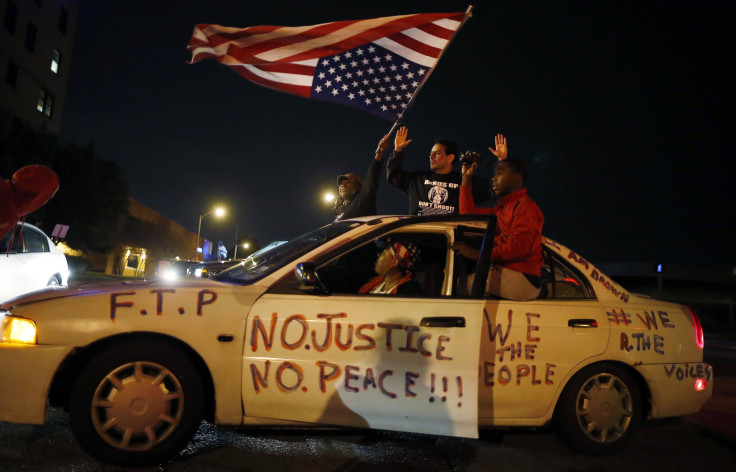St. Louis Protesters Burn Flags Over Shaw Shooting, Say ‘It’s Not Our Flag’

St. Louis protesters burned American flags during a second night of passionate demonstrations on Thursday over the shooting of a black teenager by an off-duty white officer. Vonderrit Myers Jr., 18, was shot and killed Wednesday in the predominantly African-American St. Louis neighborhood of Shaw after he allegedly shot at the police officer, who returned fire, fatally wounding Myers.
As word of the shooting got out, dozens of demonstrators began crowding the streets near the place where Myers was shot, and returned to the area Thursday night, when the flag burning took place. "It's not our flag," one protester told USA Today. "Our children are being killed in the street. This flag doesn't cover black or brown people."
Protesters chanted “no justice, no peace!” and “hands up, don’t shoot!” as two flags were set on fire in the street. Other protesters carried and waved upside-down American flags. Flag burning is considered a symbolic gesture and is protected under the First Amendment, which governs free speech. The U.S. Supreme Court ruled in 1989 that burning the American flag is a form of “symbolic speech” and that it is unconstitutional for the government to prohibit the desecration of a flag. However, certain laws have since been imposed that restrict the time, place and manner that a flag can be burned.
This week’s protests in St. Louis were evocative of August’s protests in the nearby suburb of Ferguson over the shooting of unarmed black teenager Michael Brown. Protesters in St. Louis carried signs that read “Don’t Shoot,” a phrase that protesters in Ferguson had adopted following Brown’s death. The phrase became emblematic of what Ferguson residents said was a pattern of police brutality against black residents.
Police in riot gear ordered protesters off the streets in St. Louis on Thursday after about 200 demonstrators marched and blocked traffic. Officers pepper sprayed a group of protesters following accounts of aggression, including having a knife thrown at a police officer.
© Copyright IBTimes 2025. All rights reserved.






















